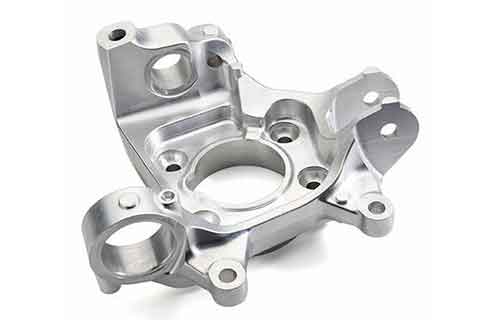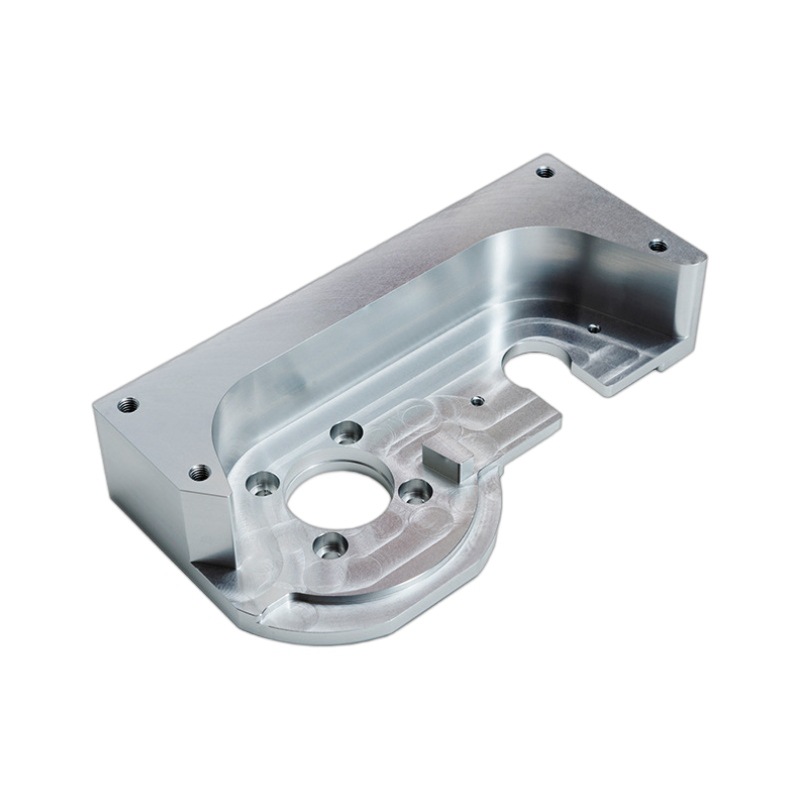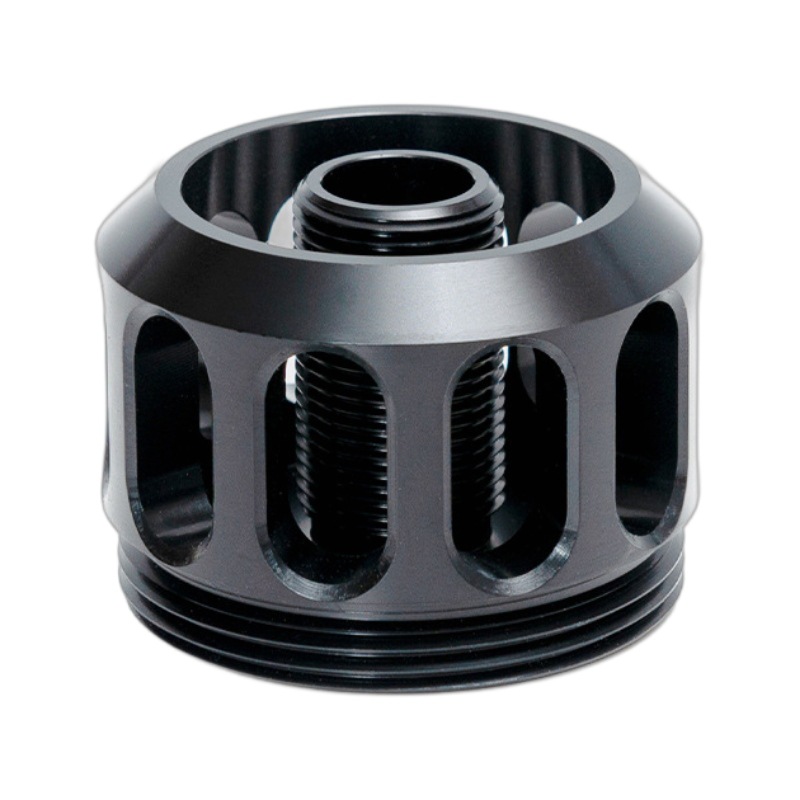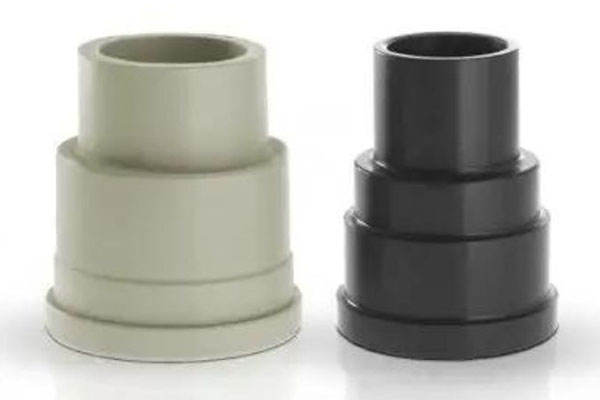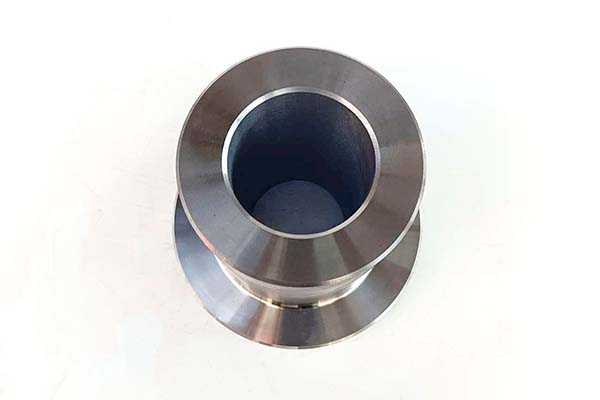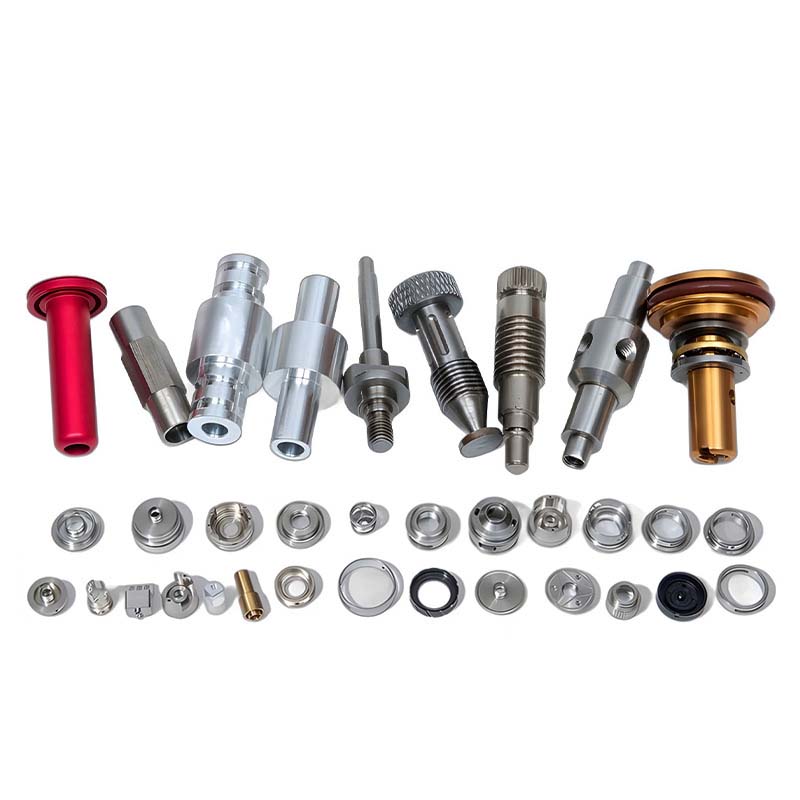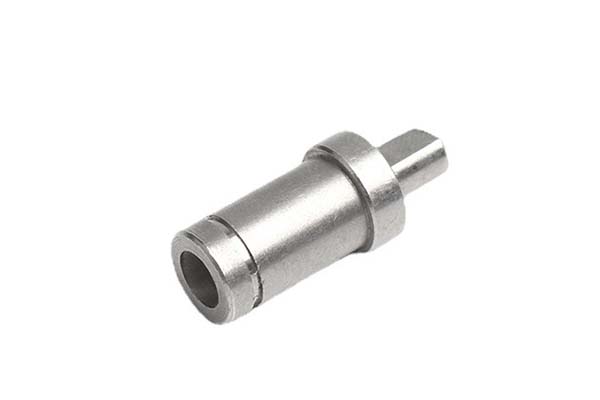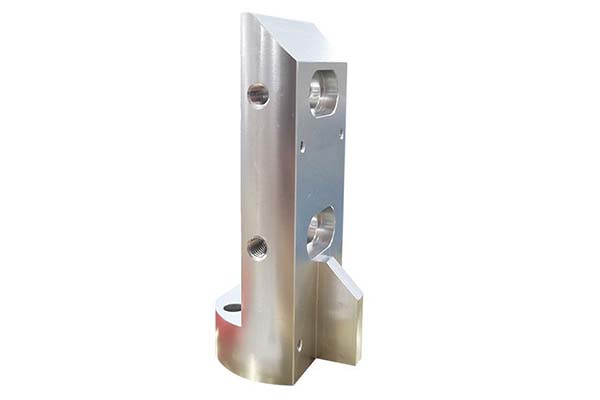Introduction
In the rapidly evolving landscape of modern manufacturing and technology, precision power stands as a cornerstone for countless industries. Among the various elements driving the progress in precision power, China Milling has emerged as a significant force. It plays a crucial role in not only the domestic manufacturing scene in China but also has a far - reaching impact on the global precision power market.
China Milling encompasses a wide range of advanced manufacturing processes, techniques, and machinery that are focused on achieving high - precision results in power - related components and systems. From the production of intricate parts for power generation equipment to the manufacturing of components used in power transmission and distribution, China Milling's influence is felt across the entire power value chain.
The precision power industry demands components with extremely tight tolerances, high - quality materials, and advanced manufacturing techniques to ensure optimal performance, reliability, and energy efficiency. China Milling has been continuously evolving to meet these exacting standards, and in the process, has been a major catalyst for the evolution of precision power. Yigu Technology will delve deep into how China Milling is driving this evolution, exploring the technologies, innovations, and market dynamics that are shaping the future of precision power.
The Basics of China Milling
What is China Milling?
China Milling, in a broad sense, refers to the advanced manufacturing activities in China that involve precision milling processes. Milling is a machining process that uses rotary cutters to remove material from a workpiece, creating precise shapes and features. It is a subtractive manufacturing method, which means material is removed from the original stock to achieve the desired final product.
In the context of China, China Milling has evolved to be a comprehensive term that encompasses not only traditional milling operations but also high - tech, high - precision milling with the aid of advanced CNC (Computer Numerical Control) machines, state - of - the - art tooling, and skilled labor.
China Milling has a wide range of applications across various industries. In the automotive industry, it is used to manufacture engine components such as cylinder heads, crankshafts, and camshafts. These parts require high precision to ensure the efficient operation of the engine. For Yigu Technology example, a slight deviation in the milling of a cylinder head can lead to issues like poor combustion, reduced fuel efficiency, and increased emissions.
In the aerospace industry, China Milling is crucial for producing components like turbine blades, wing spars, and fuselage parts. Aerospace components must meet extremely tight tolerances to ensure the safety and performance of aircraft. Turbine blades, for instance, are exposed to high temperatures and rotational forces during flight. Precise milling is essential to maintain their aerodynamic shape and mechanical integrity.
The electronics industry also benefits from China Milling. It is used to create parts for printed circuit boards (PCBs), connectors, and housings for electronic devices. In the production of PCBs, precise milling is required to create accurate holes and traces for electrical connections, which is vital for the proper functioning of electronic components.
Key Components and Processes
- Key Components
- CNC Machines: These are the workhorses of China Milling. CNC milling machines are controlled by computer programs that precisely dictate the movement of the cutting tools. High - end CNC machines in China are capable of achieving extremely tight tolerances, often as low as ±0.0002 inches (0.005mm). For example, some advanced CNC milling centers can produce parts with dimensional accuracy that is within the micron range, which is crucial for high - precision applications in industries like medical device manufacturing.
- Cutting Tools: Milling cutters are available in a variety of shapes and sizes, each designed for specific applications. Carbide - tipped cutters are popular due to their hardness, wear resistance, and ability to cut through tough materials such as steel, aluminum, and titanium. For instance, end mills are used for cutting slots, pockets, and contours, while ball - nose mills are ideal for creating curved surfaces, which are common in mold making and aerospace component manufacturing.
- Workholding Devices: These are used to securely hold the workpiece in place during the milling process. Vises, clamps, and fixtures are commonly used workholding devices. In high - precision milling, the accuracy of the workholding device is critical. A misaligned workpiece can lead to inaccurate milling results. For example, a precision - ground vise with high - repeatability clamping can ensure that the workpiece remains in the correct position throughout the milling operation.
- Processes
- Face Milling: This is a common milling process where the cutting tool rotates on an axis perpendicular to the workpiece surface. It is used to create flat surfaces on the workpiece. In China Milling, face milling is often employed in the production of large - scale components such as machine bases and structural parts. For example, in the manufacturing of heavy - duty machine tools, face milling is used to mill the mating surfaces of the machine base to ensure flatness and parallelism, which are essential for the proper assembly and operation of the machine.
- Peripheral Milling: Also known as slab milling, in this process, the cutting teeth are located on the periphery of the milling cutter. It is used to remove material along the length of the workpiece, creating grooves, slots, or shoulders. In the production of gears, peripheral milling is used to create the gear teeth profile. The precision of the milling process determines the quality and performance of the gear, such as its smooth operation and load - carrying capacity.
- Drilling and Tapping: Drilling is often a part of the milling process, used to create holes in the workpiece. Tapping is then performed to create internal threads in the drilled holes. In China Milling, especially in the production of components for the fastener industry, precise drilling and tapping are essential. For example, in the manufacturing of high - strength bolts, the drilled holes and tapped threads must meet strict dimensional and tolerance requirements to ensure proper assembly and functionality.
China Milling and Precision Power: A Closer Look
The Significance of Precision Power
Precision power is of utmost importance in modern industries. In power generation, whether it's from traditional fossil - fuel - based power plants, nuclear power plants, or renewable energy sources like wind and solar farms, precision - made components are essential. For Yigu Technology example, in a wind turbine, the gears, shafts, and blades are all produced with high precision. The gears must mesh perfectly to transfer power efficiently from the low - speed rotor to the high - speed generator. A small deviation in the gear teeth can lead to increased wear, noise, and reduced power transmission efficiency.
In power transmission and distribution systems, precision - made transformers, switchgear, and insulators ensure the reliable flow of electricity. High - precision transformers can step - up or step - down voltages with minimal energy losses. According to industry data, a well - designed and precisely manufactured transformer can have an efficiency of over 99%, while a poorly made one may have an efficiency as low as 90 - 95%, resulting in significant energy waste over time.
For electronic devices and systems, precision power supplies are crucial. In a data center, power supplies need to provide a stable and precise voltage to ensure the proper operation of servers and networking equipment. Any fluctuations in the power supply can lead to system malfunctions, data loss, and even equipment damage.
How China Milling Drives Precision Power Evolution
Technological Innovations
- New Tooling Materials: China has been at the forefront of developing new tooling materials for milling. For instance, the development of advanced carbide - based materials with enhanced hardness and wear resistance has been a game - changer. These new materials can withstand higher cutting speeds and feed rates, allowing for more efficient milling operations. Some carbide - tipped cutters in China are now capable of cutting through hardened steel with a Rockwell hardness of up to 65 HRC, which was previously very challenging.
- Advanced CNC Systems: Chinese manufacturers are increasingly adopting and developing state - of - the - art CNC systems. These systems offer features such as high - speed processing, multi - axis control, and advanced interpolation algorithms. High - speed processing allows for faster execution of milling commands, reducing the overall machining time. Multi - axis control, such as 5 - axis or even 7 - axis CNC machines, enables the production of complex 3D geometries in a single setup. For example, in the production of aerospace turbine blades, 5 - axis CNC milling machines can precisely machine the complex airfoil shapes, internal cooling channels, and attachment features with high accuracy, eliminating the need for multiple setups and reducing the risk of cumulative errors.
- Intelligent Manufacturing Technologies: Integration of technologies like the Internet of Things (IoT), artificial intelligence (AI), and machine learning (ML) into milling processes is another area of innovation. IoT sensors can be installed on milling machines to monitor parameters such as tool wear, spindle temperature, and vibration in real - time. AI and ML algorithms can then analyze this data to predict tool failures, optimize machining parameters, and improve overall process efficiency. For example, if the sensor data indicates that a milling cutter is approaching the end of its useful life, the system can automatically adjust the cutting parameters to complete the current operation without tool breakage or schedule a tool change at an opportune time.
Improved Efficiency and Productivity
In a case study of a Chinese automotive parts manufacturer, before adopting advanced China Milling techniques, it took an average of 10 hours to produce a single engine cylinder head. After upgrading to new CNC milling machines with high - speed spindles and optimized tool paths, the production time was reduced to 6 hours. This 40% reduction in production time not only increased the daily output of the factory but also reduced labor costs associated with the machining process.
In terms of cost reduction, a study by a manufacturing research firm found that on average, companies in China that have implemented advanced milling technologies have seen a 15 - 20% reduction in machining costs per part. This is due to factors such as reduced tool consumption (thanks to better - performing tools and optimized machining parameters), lower energy consumption (more efficient machines and processes), and decreased scrap rates (higher precision reduces the number of defective parts).
Enhanced Precision and Quality
The following Yigu Technology table compares the precision of traditional milling techniques and advanced China Milling techniques:
| Milling Technique | Dimensional Tolerance (mm) | Surface Roughness (μm) |
| Traditional Milling | ±0.05 - ±0.1 | 3.2 - 6.3 |
| Advanced China Milling | ±0.005 - ±0.01 | 0.8 - 1.6 |
As shown in the table, advanced China Milling techniques offer significantly higher precision in terms of dimensional tolerance and better surface finish. This level of precision is crucial for high - end applications. In the production of medical implants, for example, the precise fit of components is essential for patient safety and the effectiveness of the implant. High - precision milling ensures that the implants match the patient's anatomy accurately, reducing the risk of complications during surgery and improving the long - term performance of the implant. In the semiconductor industry, precision milling is used to create molds and components with extremely tight tolerances. The high precision of China Milling allows for the production of smaller and more efficient semiconductor devices, driving the advancement of the electronics industry.
Conclusion
In Yigu Technology conclusion, China Milling has emerged as a powerful driver in the evolution of precision power. Through a combination of technological innovation, improved efficiency, and enhanced precision, it has transformed the manufacturing landscape for precision - power - related components and systems.
The new tooling materials, advanced CNC systems, and the integration of intelligent manufacturing technologies in China Milling have not only improved the quality and performance of precision - power products but have also made the manufacturing processes more efficient and cost - effective. The reduced production times and machining costs, along with the significantly higher precision levels, have enabled industries relying on precision power to produce better - performing products at a lower cost.
FAQ
- What are the main applications of China Milling in precision power components?
China Milling is used in the production of various precision power components. In power generation, it is applied to manufacture parts of turbines, generators, and boilers. For power transmission, it is used to create components for transformers, switchgear, and insulators. In the electronics field related to power, it helps in making parts for power supplies, printed circuit boards, and connectors.
- How does China Milling contribute to cost - reduction in precision power manufacturing?
China Milling contributes to cost - reduction in several ways. First, new tooling materials and advanced CNC systems enable higher - speed and more efficient machining, reducing production time. Second, intelligent manufacturing technologies can optimize machining parameters, reducing tool wear and energy consumption. Third, the high precision of China Milling reduces the scrap rate, as fewer parts are defective, thus saving material and production costs.
- What are the future trends of China Milling in relation to precision power?
Future trends include the development of even more advanced CNC systems with higher - axis control and faster processing speeds. There will also be an increased focus on the integration of artificial intelligence and the Internet of Things to further optimize milling processes. Additionally, the use of new and more sustainable materials in milling for precision power components is expected to grow, driven by the need for more energy - efficient and environmentally friendly power solutions.
